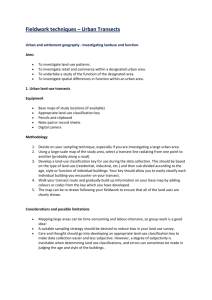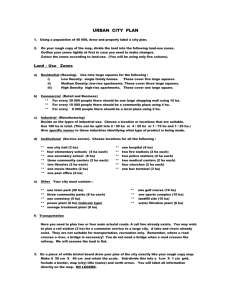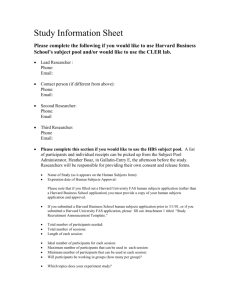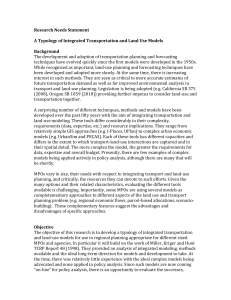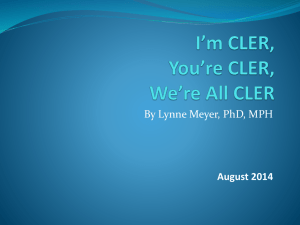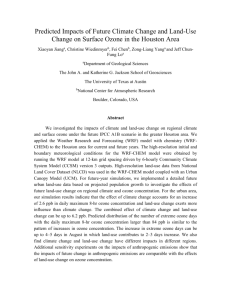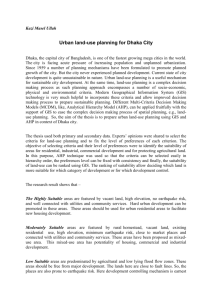the community led emissions reduction (cler) pilot program
advertisement
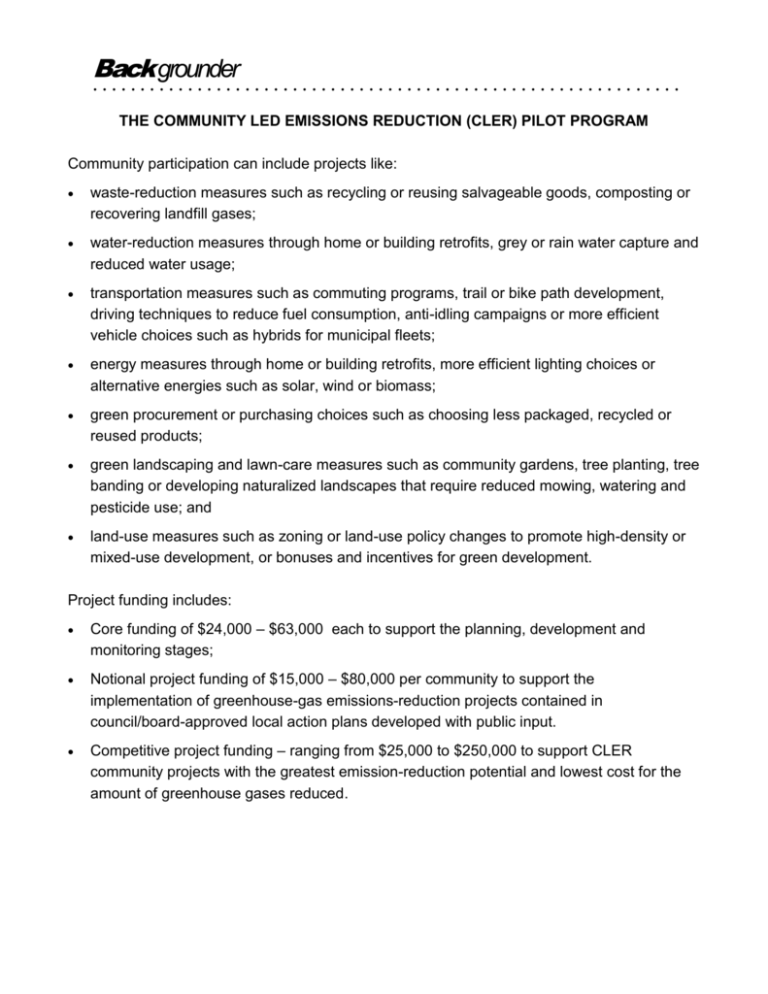
Back grounder • • • • • • • • • • • • • • • • • • • • • • • • • • • • • • • • • • • • • • • • • • • • • • • • • • • • • • • • • • • • • • THE COMMUNITY LED EMISSIONS REDUCTION (CLER) PILOT PROGRAM Community participation can include projects like: waste-reduction measures such as recycling or reusing salvageable goods, composting or recovering landfill gases; water-reduction measures through home or building retrofits, grey or rain water capture and reduced water usage; transportation measures such as commuting programs, trail or bike path development, driving techniques to reduce fuel consumption, anti-idling campaigns or more efficient vehicle choices such as hybrids for municipal fleets; energy measures through home or building retrofits, more efficient lighting choices or alternative energies such as solar, wind or biomass; green procurement or purchasing choices such as choosing less packaged, recycled or reused products; green landscaping and lawn-care measures such as community gardens, tree planting, tree banding or developing naturalized landscapes that require reduced mowing, watering and pesticide use; and land-use measures such as zoning or land-use policy changes to promote high-density or mixed-use development, or bonuses and incentives for green development. Project funding includes: Core funding of $24,000 – $63,000 each to support the planning, development and monitoring stages; Notional project funding of $15,000 – $80,000 per community to support the implementation of greenhouse-gas emissions-reduction projects contained in council/board-approved local action plans developed with public input. Competitive project funding – ranging from $25,000 to $250,000 to support CLER community projects with the greatest emission-reduction potential and lowest cost for the amount of greenhouse gases reduced.

